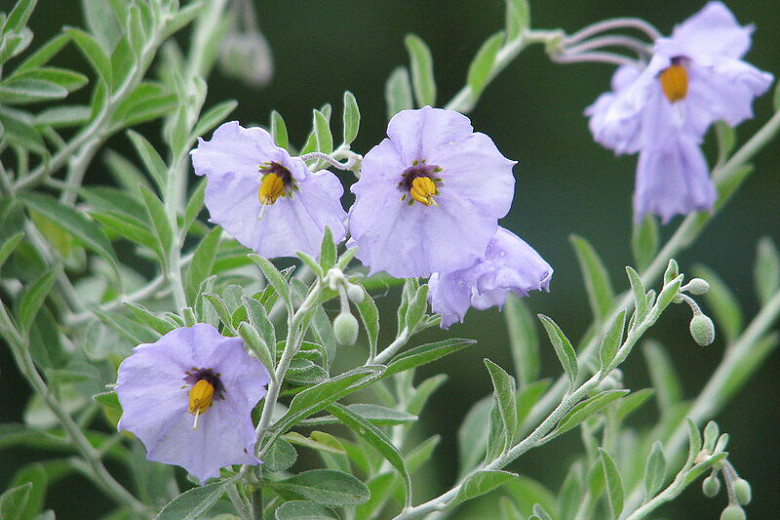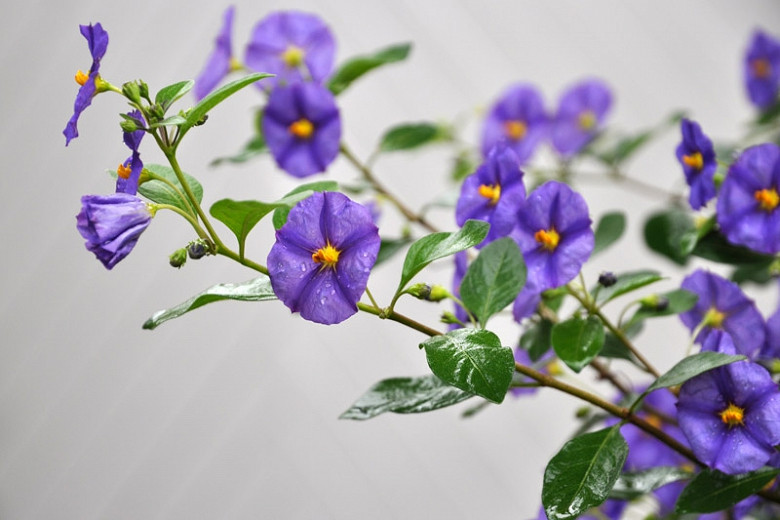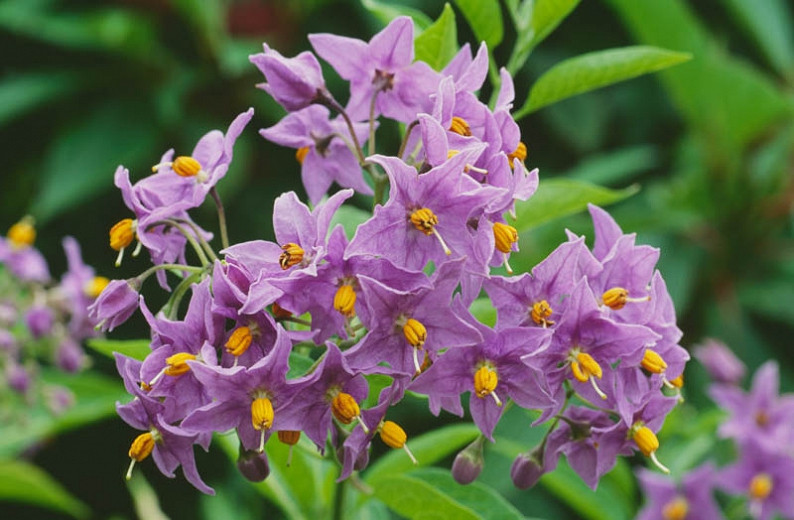Solanum umbelliferum (Bluewitch Nightshade)
Surviving neglect, Solanum umbelliferum (Bluewitch Nightshade) is a rounded to spreading, evergreen to deciduous shrub boasting a profusion of small umbels of blue-purple flowers adorned with a cone of prominent yellow stamens. Though the main bloom period is spring and summer, some flowers will occur most of the year. The flowers are frequented by bumblebees and a few other bee species. Borne on slender stems, the frilly blossoms close into round buds overnight. They attract insects and give way to small round green fruits which turn purple when ripe and resemble small eggplants. Birds feast on the fruit. The blossoms stand out nicely against the foliage of simple, oval, gray leaves. The leaves are summer deciduous if the plant is not given enough moisture. Solanum umbelliferum is native to Chaparral and Juniper-Oak Woodland plant communities from northern California to Baja California and east into Arizona, where it can be found growing on dry rocky slopes and canyons from sea level to above 5,000 feet. Bluewitch Nightshade is a tough, hardy shrub that can grow in rocky and clay soils and springs up in areas recovering from wildfires or other disturbances. Deer resistant, Bluewitch Nightshade is a great plant for a dry rock garden, perennial border, or as a container specimen.
- Grows up to 2-3 ft. tall and wide (60-90 cm).
- Thrives in full sun to part shade in a variety of dry, well-drained soils. Needs little irrigation in summer – once a month once established. Tolerates saline soil, sodic soil and drought.
- No serious pest or disease issues. Deer resistant.
- All parts of the plant are toxic to people and some animals.
- Toxic to dogs, toxic to cats, toxic to horses, toxic to humans.
- Propagate by treated seed or rooted layers. Seeds need a one-hour acid or hot water treatment.
- Native to Arizona, California, Oregon, and Baja California.
Requirements
| Hardiness | 7 – 10 |
|---|---|
| Climate Zones | 7, 8, 9, 10, 15, 16, 17, 19, 20, 21, 22, 23, 24 |
| Plant Type | Shrubs |
| Plant Family | Solanum |
| Exposure | Full Sun, Partial Sun |
| Season of Interest | Spring (Mid,Late)Summer (Early,Mid) |
| Height | 2' – 3' (60cm – 90cm) |
| Spread | 2' – 3' (60cm – 90cm) |
| Spacing | 24″ – 36″ (60cm – 90cm) |
| Water Needs | Low |
| Maintenance | Low |
| Soil Type | Clay, Loam, Sand |
| Soil pH | Acid, Alkaline, Neutral |
| Soil Drainage | Well-Drained |
| Characteristics | Showy |
| Native Plants | United States, California, Pacific Northwest, Oregon, Southwest, Arizona |
| Tolerance | Clay Soil, Deer, Drought, Dry Soil, Rocky Soil, Salt |
| Attracts | Bees, Birds, Butterflies |
| Garden Uses | Beds and Borders, Patio and Containers |
| Garden Styles | Coastal Garden, Gravel and Rock Garden, Mediterranean Garden |








